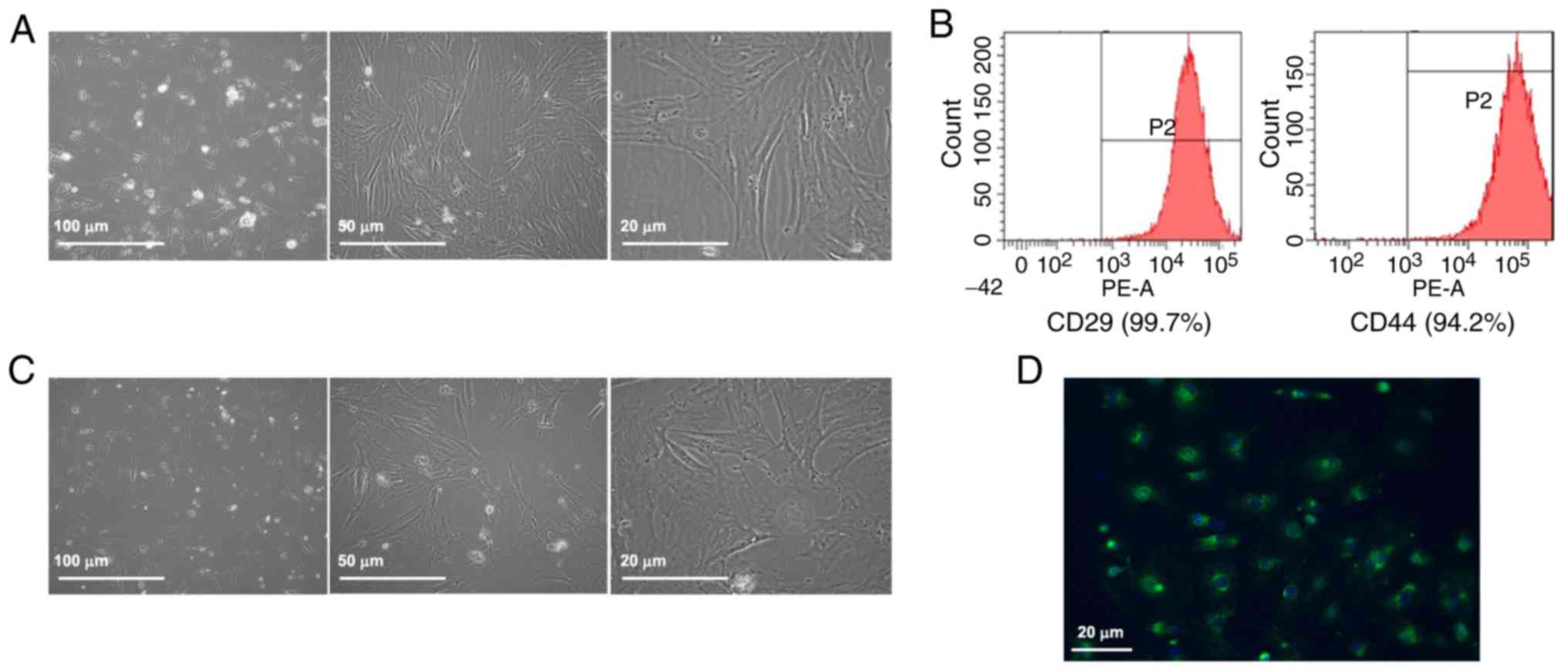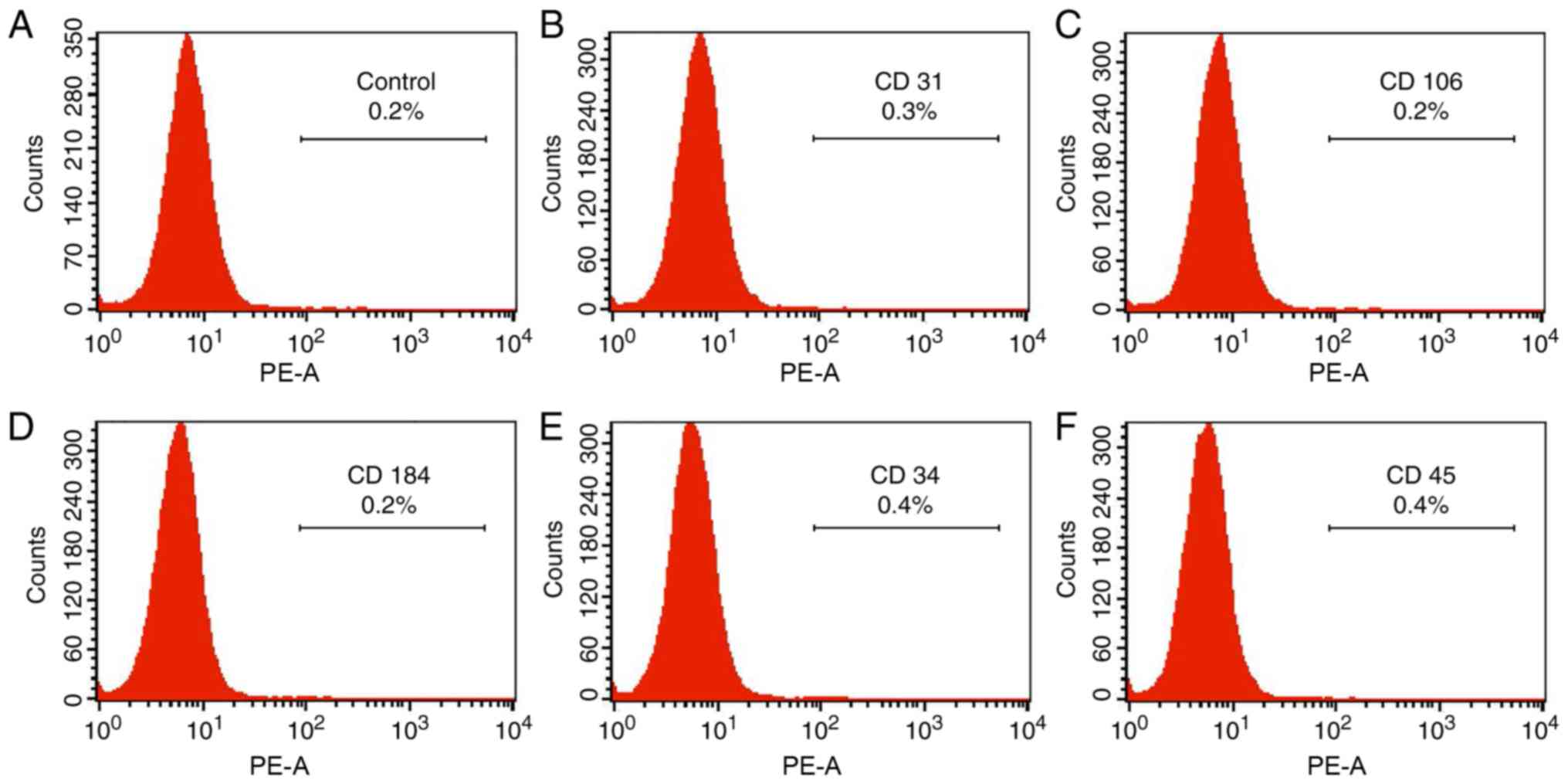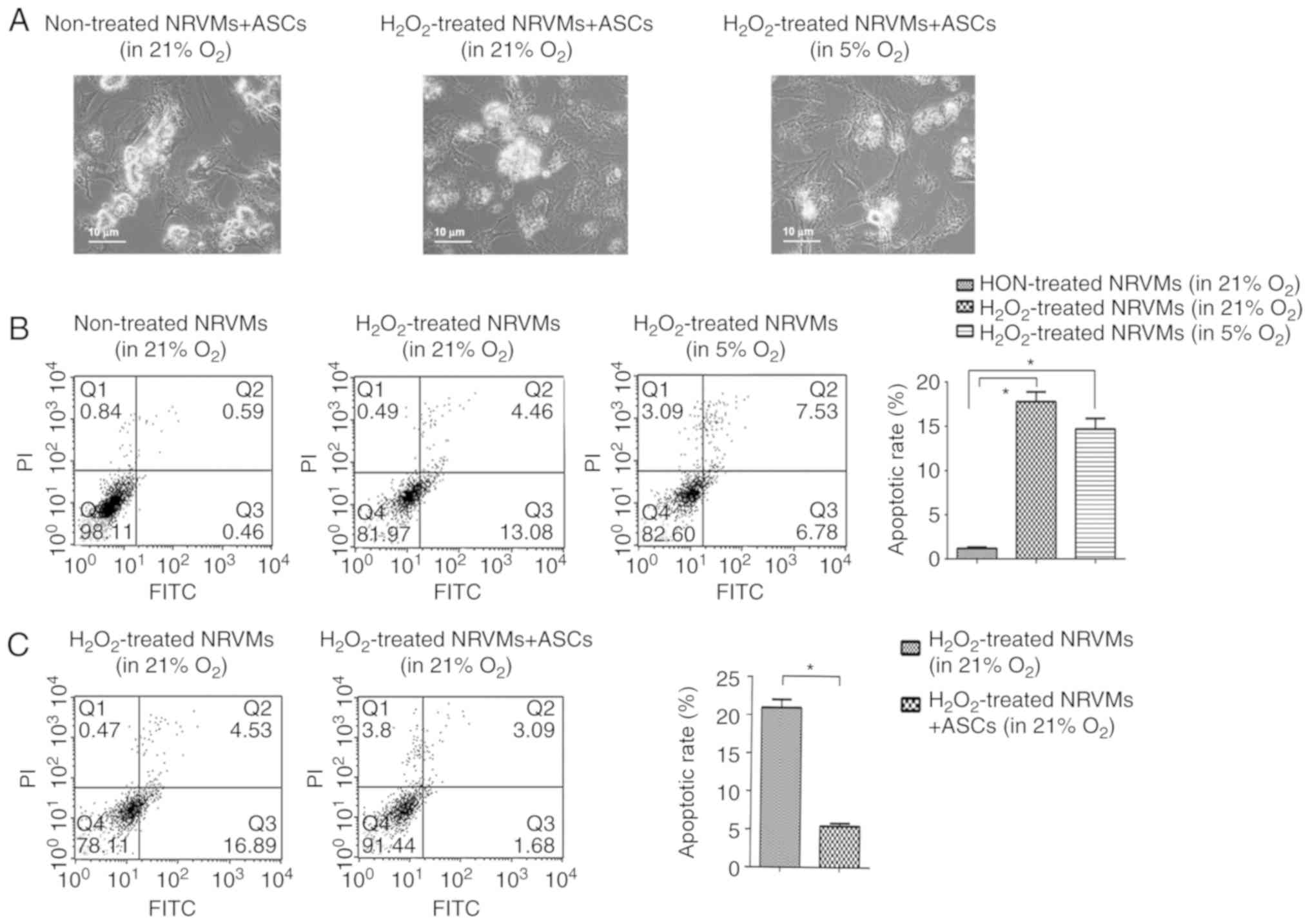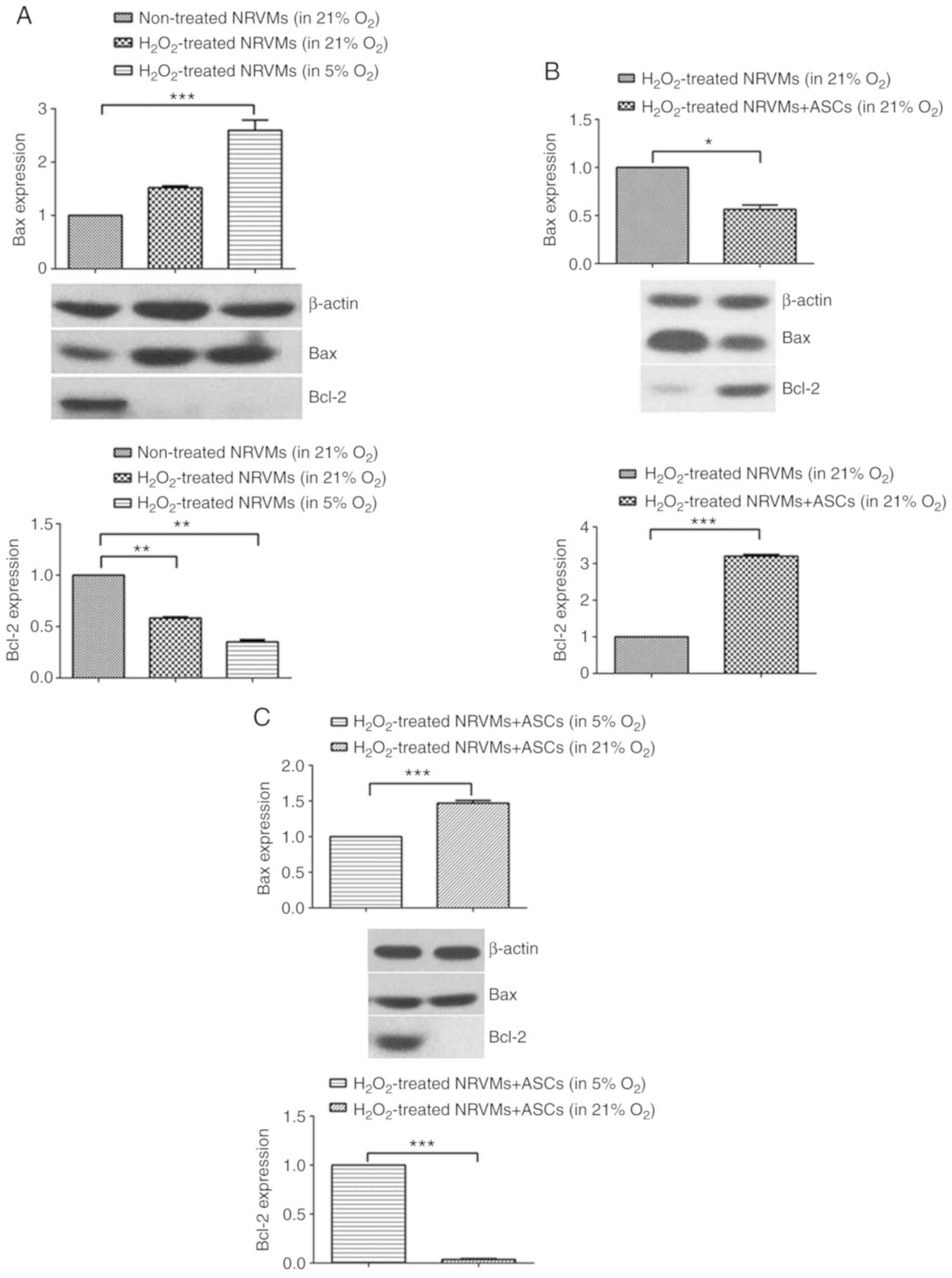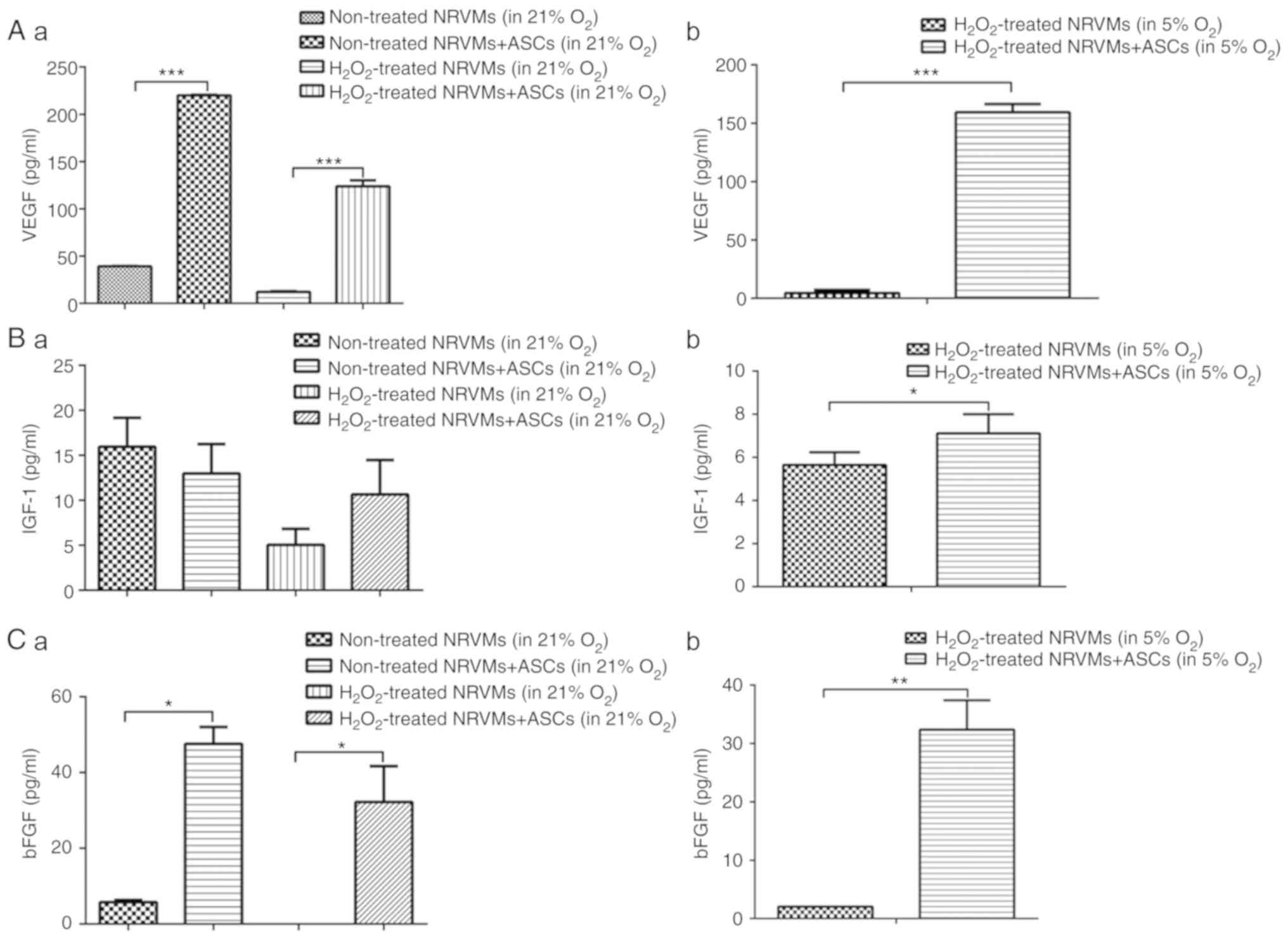|
1
|
Boateng S and Sanborn T: Acute myocardial
infarction. Dis Mon. 59:83–96. 2013. View Article : Google Scholar : PubMed/NCBI
|
|
2
|
Alagarsamy KN, Yan W, Srivastava A,
Desiderio V and Dhingra S: Application of injectable hydrogels for
cardiac stem cell therapy and tissue engineering. Rev Cardiovasc
Med. 20:221–230. 2019. View Article : Google Scholar
|
|
3
|
Povsic TJ, O’Connor CM, Henry T, Taussig
A, Kereiakes DJ, Fortuin FD, Niederman A, Schatz R, Spencer R 4th,
Owens D, et al: A double-blind, randomized, controlled, multicenter
study to assess the safety and cardiovascular effects of skeletal
myoblast implantation by catheter delivery in patients with chronic
heart failure after myocardial infarction. Am Heart J.
162:654–662.e1. 2011. View Article : Google Scholar : PubMed/NCBI
|
|
4
|
Liu B, Duan CY, Luo CF, Ou CW, Sun K, Wu
ZY, Huang H, Cheng CF, Li YP and Chen MS: Effectiveness and safety
of selected bone marrow stem cells on left ventricular function in
patients with acute myocardial infarction: A meta-analysis of
randomized controlled trials. Int J Cardiol. 177:764–770. 2014.
View Article : Google Scholar : PubMed/NCBI
|
|
5
|
Zuk PA, Zhu M, Mizuno H, Huang J, Futrell
JW, Katz AJ, Benhaim P, Lorenz HP and Hedrick MH: Multilineage
cells from human adipose tissue: Implications for cell-based
therapies. Tissue Eng. 7:211–228. 2001. View Article : Google Scholar : PubMed/NCBI
|
|
6
|
Poglio S, De Toni-Costes F, Arnaud E,
Laharrague P, Espinosa E, Casteilla L and Cousin B: Adipose tissue
as a dedicated reservoir of functional mast cell progenitors. Stem
Cells. 28:2065–2072. 2010. View
Article : Google Scholar : PubMed/NCBI
|
|
7
|
Gimble JM and Guilak F: Differentiation
potential of adipose derived adult stem (ADAS) cells. Curr Top Dev
Biol. 58:137–160. 2003. View Article : Google Scholar
|
|
8
|
Wang L, Deng J, Tian W, Xiang B, Yang T,
Li G, Wang J, Gruwel M, Kashour T, Rendell J, et al:
Adipose-derived stem cells are an effective cell candidate for
treatment of heart failure: An MR imaging study of rat hearts. Am J
Physiol Heart Circ Physiol. 297:H1020–H1031. 2009. View Article : Google Scholar : PubMed/NCBI
|
|
9
|
Schenke-Layland K, Strem BM, Jordan MC,
Deemedio MT, Hedrick MH, Roos KP, Fraser JK and Maclellan WR:
Adipose tissue-derived cells improve cardiac function following
myocardial infarction. J Surg Res. 153:217–223. 2009. View Article : Google Scholar :
|
|
10
|
Yang D, Wang W, Li L, Peng Y, Chen P,
Huang H, Guo Y, Xia X, Wang Y, Wang H, et al: The relative
contribution of paracine effect versus direct differentiation on
adipose-derived stem cell transplantation mediated cardiac repair.
PLoS One. 8:e590202013. View Article : Google Scholar : PubMed/NCBI
|
|
11
|
Henry TD, Pepine CJ, Lambert CR, Traverse
JH, Schatz R, Costa M, Povsic TJ, David Anderson R, Willerson JT,
Kesten S and Perin EC: The athena trials: Autologous
adipose-derived regenerative cells for refractory chronic
myocardial ischemia with left ventricular dysfunction. Catheter
Cardiovasc Interv. 89:169–177. 2017. View Article : Google Scholar
|
|
12
|
Hsiao ST, Lokmic Z, Peshavariya H,
Abberton KM, Dusting GJ, Lim SY and Dilley RJ: Hypoxic conditioning
enhances the angiogenic paracrine activity of human adipose-derived
stem cells. Stem Cells Dev. 22:1614–1623. 2013. View Article : Google Scholar : PubMed/NCBI
|
|
13
|
Rehman J, Traktuev D, Li J, Merfeld-Clauss
S, Temm-Grove CJ, Bovenkerk JE, Pell CL, Johnstone BH, Considine RV
and March KL: Secretion of angiogenic and antiapoptotic factors by
human adipose stromal cells. Circulation. 109:1292–1298. 2004.
View Article : Google Scholar : PubMed/NCBI
|
|
14
|
Suga H, Glotzbach JP, Sorkin M, Longaker
MT and Gurtner GC: Paracrine mechanism of angiogenesis in
adipose-derived stem cell transplantation. Ann Plast Surg.
72:234–241. 2014. View Article : Google Scholar
|
|
15
|
Hoeben A, Landuyt B, Highley MS, Wildiers
H, Van Oosterom AT and De Bruijn EA: Vascular endothelial growth
factor and angiogenesis. Pharmacol Rev. 56:549–580. 2004.
View Article : Google Scholar : PubMed/NCBI
|
|
16
|
Youssef A, Aboalola D and Han VK: The
roles of insulin-like growth factors in mesenchymal stem cell
niche. Stem Cells Int. 2017:9453108. 2017.
|
|
17
|
Kim JH, Lee MC, Seong SC, Park KH and Lee
S: Enhanced proliferation and chondrogenic differentiation of human
synovium-derived stem cells expanded with basic fibroblast growth
factor. Tissue Eng Part A. 17:991–1002. 2011. View Article : Google Scholar
|
|
18
|
Yang J, Zhang Y, Zang G, Wang T, Yu Z,
Wang S, Tang Z and Liu J: Adipose-derived stem cells improve
erectile function partially through the secretion of IGF-1, bFGF,
and VEGF in aged rats. Andrology. 6:498–509. 2018. View Article : Google Scholar : PubMed/NCBI
|
|
19
|
Carreau A, El Hafny-Rahbi B, Matejuk A,
Grillon C and Kieda C: Why is the partial oxygen pressure of human
tissues a crucial parameter? Small molecules and hypoxia. J Cell
Mol Med. 15:1239–1253. 2011. View Article : Google Scholar : PubMed/NCBI
|
|
20
|
Kim JH, Park SH, Park SG, Choi JS, Xia Y
and Sung JH: The pivotal role of reactive oxygen species generation
in the hypoxia-induced stimulation of adipose-derived stem cells.
Stem Cells Dev. 20:1753–1761. 2011. View Article : Google Scholar : PubMed/NCBI
|
|
21
|
Mohyeldin A, Garzón-Muvdi T and
Quiñones-Hinojosa A: Oxygen in stem cell biology: A critical
component of the stem cell niche. Cell Stem Cell. 7:150–161. 2010.
View Article : Google Scholar : PubMed/NCBI
|
|
22
|
Pushpan CK, V S, G S, Rathnam P, A J and A
H: Attenuation of atherosclerotic complications by modulating
inflammatory responses in hypercholesterolemic rats with dietary
Njavara rice bran oil. Biomed Pharmacother. 83:1387–1397. 2016.
View Article : Google Scholar : PubMed/NCBI
|
|
23
|
Tchkonia T, Tchoukalova YD, Giorgadze N,
Pirtskhalava T, Karagiannides I, Forse RA, Koo A, Stevenson M,
Chinnappan D, Cartwright A, et al: Abundance of two human
preadipocyte subtypes with distinct capacities for replication,
adipogenesis, and apoptosis varies among fat depots. Am J Physiol
Endocrinol Metab. 288:E267–E277. 2005. View Article : Google Scholar
|
|
24
|
Rutering J, Ilmer M, Recio A, Coleman M,
Vykoukal J and Alt E: Improved method for isolation of neonatal rat
cardiomyocytes with increased yield of C-Kit+ cardiac progenitor
cells. J Stem Cell Res Ther. 5:1–8. 2015.PubMed/NCBI
|
|
25
|
Chen A, Li G, Chen L, Guo J and Liu Y:
Downregulation of microRNA-100 protects
H2O2-induced apoptosis in neonatal
cardiomyocytes. Int J Clin Exp Pathol. 8:5491–5496. 2015.
|
|
26
|
Xu Y, Liu Z, Liu L, Zhao C, Xiong F, Zhou
C, Li Y, Shan Y, Peng F and Zhang C: Neurospheres from rat
adipose-derived stem cells could be induced into functional Schwann
cell-like cells in vitro. BMC Neurosci. 9:212008. View Article : Google Scholar : PubMed/NCBI
|
|
27
|
Waddingham MT, Sonobe T, Tsuchimochi H,
Edgley AJ, Sukumaran V, Chen YC, Hansra SS, Schwenke DO, Umetani K,
Aoyama K, et al: Diastolic dysfunction is initiated by
cardiomyocyte impairment ahead of endothelial dysfunction due to
increased oxidative stress and inflammation in an experimental
prediabetes model. J Mol Cell Cardiol. 137:119–131. 2019.
View Article : Google Scholar : PubMed/NCBI
|
|
28
|
Owen JB and Butterfiel DA: Measurement of
oxidized/reduced glutathione ratio. Methods Mol Biol. 648:269–277.
2010. View Article : Google Scholar : PubMed/NCBI
|
|
29
|
Fang Z, Yin X, Wang J, Tian N, Ao Q, Gu Y
and Liu Y: Functional characterization of human umbilical
cord-derived mesenchymal stem cells for treatment of systolic heart
failure. Exp Ther Med. 12:3328–3332. 2016. View Article : Google Scholar : PubMed/NCBI
|
|
30
|
Cawthorn WP, Scheller EL and MacDougald
OA: Adipose tissue stem cells meet preadipocyte commitment: Going
back to the future. J Lipid Res. 53:227–246. 2012. View Article : Google Scholar :
|
|
31
|
Zhu Y, Liu T, Song K, Fan X, Ma X and Cui
Z: Adipose-derived stem cell: A better stem cell than BMSC. Cell
Biochem Funct. 26:664–675. 2008. View Article : Google Scholar : PubMed/NCBI
|
|
32
|
Li TS, Cheng K, Malliaras K, Smith RR,
Zhang Y, Sun B, Matsushita N, Blusztajn A, Terrovitis J, Kusuoka H,
et al: Direct comparison of different stem cell types and
subpopulations reveals superior paracrine potency and myocardial
repair efficacy with cardiosphere-derived cells. J Am Coll Cardiol.
59:942–953. 2012. View Article : Google Scholar : PubMed/NCBI
|
|
33
|
Mazo M, Hernández S, Gavira J, Abizanda G,
Araña M, López-Martínez T, Moreno C, Merino J, Martino-Rodríguez A,
Uixeira A, et al: Treatment of reperfused ischemia with
adipose-derived stem cells in a preclinical Swine model of
myocardial infarction. Cell Transplant. 21:2723–2733. 2012.
View Article : Google Scholar : PubMed/NCBI
|
|
34
|
Sadat S, Gehmert S, Song YH, Yen Y, Bai X,
Gaiser S, Klein H and Alt E: The cardioprotective effect of
mesenchymal stem cells is mediated by IGF-I and VEGF. Biochem
Biophys Res Commun. 363:674–679. 2007. View Article : Google Scholar : PubMed/NCBI
|
|
35
|
Tachida Y, Suda K, Nagase H, Shimada K,
Isono F and Kobayashi H: Secreted factors from adipose
tissue-derived mesenchymal stem cells suppress oxygen/glucose
deprivation-induced cardiomyocyte cell death via furin/PCSK-like
enzyme activity. Biochem Biophys Rep. 7:266–272. 2016.PubMed/NCBI
|
|
36
|
Panina YA, Yakimov AS, Komleva YK, Morgun
AV, Lopatina OL, Malinovskaya NA, Shuvaev AN, Salmin VV,
Taranushenko TE and Salmina AB: Plasticity of adipose
tissue-derived stem cells and regulation of angiogenesis. Front
Physiol. 9:16562018. View Article : Google Scholar : PubMed/NCBI
|
|
37
|
Grinnemo KH, Månsson-Broberg A, Leblanc K,
Corbascio M, Wärdell E, Siddiqui AJ, Hao X, Sylvén C and Dellgren
G: Human mesenchymal stem cells do not differentiate into
cardiomyocytes in a cardiac ischemic xenomodel. Ann Med.
38:144–153. 2006. View Article : Google Scholar : PubMed/NCBI
|
|
38
|
Atsma DE, Fibbe WE and Rabelink TJ:
Opportunities and challenges for mesenchymal stem cell-mediated
heart repair. Curr Opin Lipidol. 18:645–649. 2007. View Article : Google Scholar : PubMed/NCBI
|
|
39
|
Tang JM, Wang JN, Zhang L, Zheng F, Yang
JY, Kong X, Guo LY, Chen L, Huang YZ, Wan Y and Chen SY: VEGF/SDF-1
promotes cardiac stem cell mobilization and myocardial repair in
the infarcted heart. Cardiovasc Res. 91:402–411. 2011. View Article : Google Scholar : PubMed/NCBI
|
|
40
|
Deuse T, Peter C, Fedak PW, Doyle T,
Reichenspurner H, Zimmermann WH, Eschenhagen T, Stein W, Wu JC,
Robbins RC and Schrepfer S: Hepatocyte growth factor or vascular
endothelial growth factor gene transfer maximizes mesenchymal stem
cell-based myocardial salvage after acute myocardial infarction.
Circulation. 120(11 Suppl): S247–S254. 2009. View Article : Google Scholar : PubMed/NCBI
|
|
41
|
Park SG, Kim JH, Xia Y and Sung JH:
Generation of reactive oxygen species in adipose-derived stem
cells: Friend or foe? Expert Opin Ther Targets. 15:1297–1306. 2011.
View Article : Google Scholar : PubMed/NCBI
|















